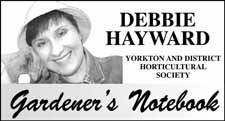As I make a cup of tea to sit and chat with you, the birds are trilling in the trees, and it is such a glorious sound! Our garden is still quite soggy, but at least the sun is stronger now and working outside doesn't seem like it will be that far away!
I got a wonderful new gardening book called "Best Garden Design" by Chris Young. This book is about "practical inspiration from the Royal Horticultural Society Chelsea Flower Show." The RHS has been hosting this amazing flower show since 1912. Eleven acres on the grounds of the Royal Hospital in London are transformed into the most astonishing display gardens. I wish you could see the photos in this book: those gardens look as though they have been in place for years. The show brings all kinds of people together: garden designers, people from nurseries and greenhouses, and thousands of enthusiastic gardeners all with one goal: to get ideas and be inspired with their own gardens. There are three main display areas: the Grand Pavilion which has rows of flowers at their peak of perfection; the show gardens, which would show you and me all kinds of interesting ways to create and enhance our gardens; and the trade stands with all the latest gardening products. Where would you and I go first? It would all be so interesting that we'd have to stop for a cup of tea and a scone so that we could decide where to go first!
One of the gardens featured in the book was based on the German plant breeder Karl Foerster. Of course, we know Karl from the beautiful perennial grass named after him; but I didn't know that he was a huge fan of perennials, and had certain plant combinations that were his favorites. The two garden designers who created the Foerster-inspired garden did so by dividing the plants into three styles: the border plantings, which are the lower plants at the front and then taller ones behind; the "drift" plants which are plants of similar colors, giving the impression of a wave of color; and then the "mingled" or "tapestry" type of planting where a variety of plants are used for color and texture. By mixing all three elements, they created a garden that was carefully planned but looked very simple and relaxed.
Some of their tips that we could try in our own gardens is to stick to strong, simple design which lets the plants be the focus of our attention. They created different areas in the garden, and stress that even in a small garden this can be achieved by making a small seating area, or having a feature like a trellis or pergola to visually define another space. They used hedges at the back of the garden to give the eye somewhere to rest. And they used what they call "color theming" to be sure that colors either go together in similar tones, or go all-out in contrast to create impact.
Really, whether you and I have a large garden or a small corner, we can keep these ideas in mind when we're planning this year's garden.
The next meeting of the Yorkton and District Horticultural Society will be on Thursday, May 15. Our guest speakers will be Joyce and Ed Smith telling us all about straw bale gardening. Hope you can be there! I'd also like to take a moment to congratulate Bertha Schneider, a long-time member of the Society and a very knowledgeable and hard-working gardener, who is now an honorary lifetime member of the Society, a well-deserved honor for a very special lady!
Congratulations, Bertha!
Check your garden every day; there is always something new to see! I enjoy the walk and recalling fun times with Toby in the yard: very therapeutic! Have a good week!



